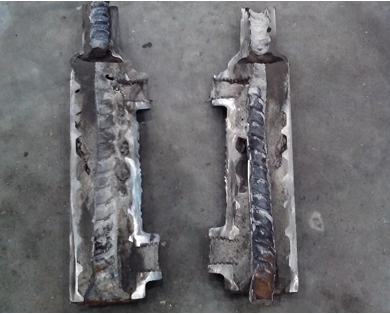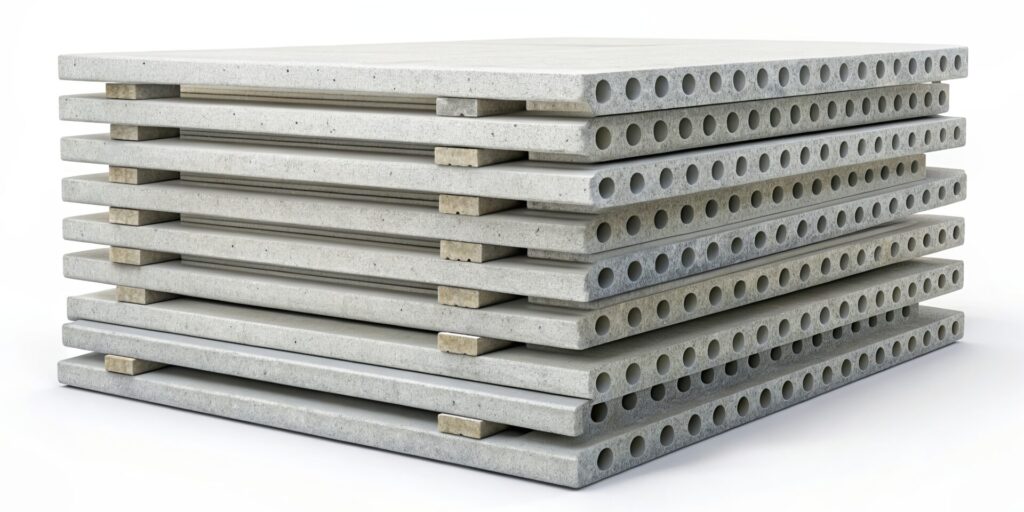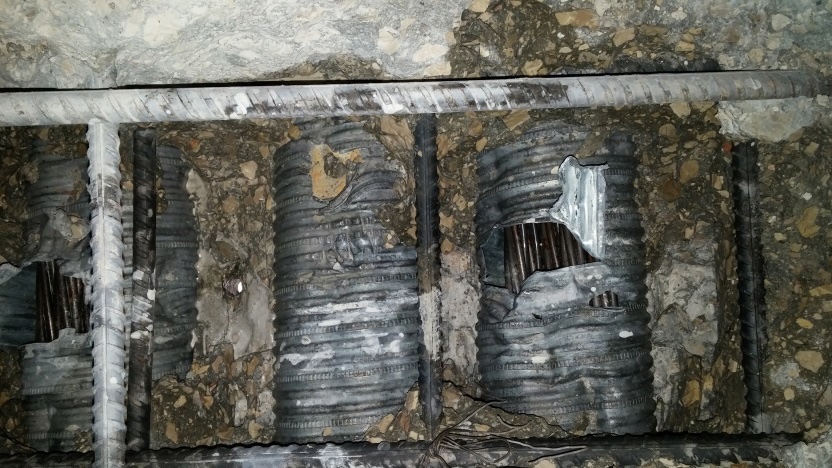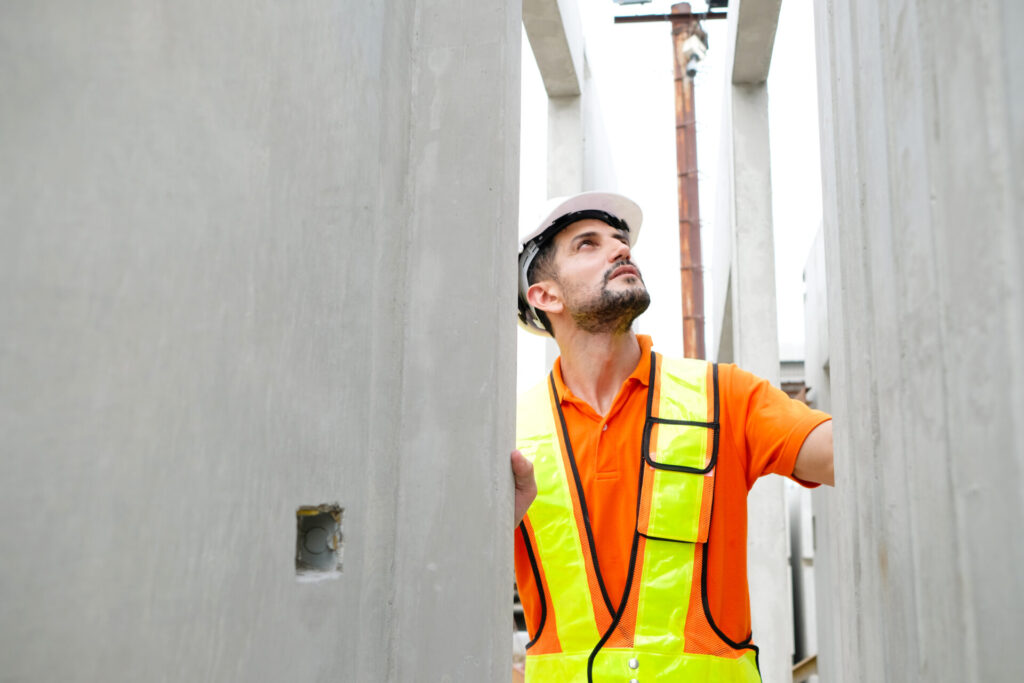Ultrasonic tomography is the only proven way to verify Drossbach duct grout fill, ensuring safety and protecting engineers from liability. Read about why GPR falls short and why ultrasonic testing is the professional standard.
The Engineer’s Responsibility
Structural consulting engineers are frequently asked to sign PS4 Producer Statements confirming that critical structural elements meet compliance. In post-tensioned (PT) concrete, one of the most vital elements is the Drossbach duct system—the corrugated galvanized steel conduits that house tendons or reinforcing starter bars. The duct must be properly aligned and fully grout-filled to ensure tendon protection, load transfer, and long-term durability.

The above image is an example of incomplete grouting inside a grout tube, leaving rebar connection vulnerable.
If ducts are partially filled, misaligned, or left voided, the risks include corrosion, tendon failure, stress concentration, and even progressive collapse in extreme cases. For engineers, sign-off carries both professional liability and public safety consequences.
A widespread misconception in the New Zealand market is that Ground Penetrating Radar (GPR) alone can confirm whether ducts are grout-filled. In reality, this is scientifically impossible:

By contrast, Ultrasonic Tomography (e.g., MIRA) was specifically developed to solve this problem.
Only ultrasonic tomography can scientifically determine whether a Drossbach duct is:
The below image shows exposed post-Tenons ducts in concrete showing grouped tendons inside — verifying complete grout fill is essential to prevent long-term failures.

Some NDT providers market GPR as a complete solution. This is misleading, and worse, dangerous. Engineers relying on such results risk:
In Australia, systemic failures in duct grouting have already been reported (CROSS-AUS Report 961), highlighting the consequences of inadequate QA.

To protect both structures and professional liability, consulting engineers should insist on:
The evidence is clear: Drossbach ducts present inherent risks, with up to 70% of large PT projects experiencing duct installation issues. Grout verification is not optional—it is essential.
For structural consulting engineers, the path forward is straightforward:
At CSI, we use advanced ultrasonic tomography (MIRA) alongside GPR to deliver science-based, reliable verification of Drossbach ducts—giving engineers the confidence their PS4s rest on solid ground.
We would be keen to hear what NDT solutions you would like for your structural resilience investigations.
If you would like to find out more about the Non-Destructive Testing Services (NDT) that we offer click here!
Click here for a list of our services.
Call Us On 0800 33 77 67 Or Request a Quote Here.